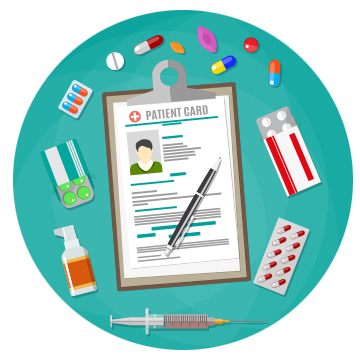Module 5: Monitoring and Evaluation
Lesson 3
Focused history and physical
A focused history and physical exam based on the patient’s condition should be conducted every 4–6 months or more frequently if the patient’s condition warrants it.
- Include the same assessment tools that you used when doing the initial assessment or a short version of the same tools.
- Special consideration should be taken with frail older adults and with children.
- Refer to the initial assessment to identify the tools used evaluating the need for a CDS. It may be helpful to utilize the same tools in the re-assessment.
- In addition, be sure to include
- Complete vital signs and assessment of level of consciousness;
- Gait assessment;
- Assessment of functional changes;
- Mental health assessment;
- Medication response (beneficial and negative responses) and use history;
- Progress on agreed care plan;
- Urine drug screen (UDS): Complete a UDS at baseline, randomly 2–3 times per year and any time there is a concern regarding misuse;
- If appropriate, conduct a pill count. Consider doing this initially at every visit when the patient is being stabilized on the CDS, anytime that an early refill is requested, whenever there are drug changes, and any time there is a concern regarding misuse.
A tool such as the 6As – Opioid therapy monitoring tool, can be useful in capturing information during follow-up visits.
Learning activity and reflection
- Open the opioid monitoring tool.
- Complete the tool based on the information from one of the Interactive Case Studies 1, 3 or 4.
Related Reference:
- Schneider, J. (2014). Opioid Prescribing Part 2: Appropriate Documentation of Follow-up Visits. Retrieved from http://www.jenniferschneider.com/pdf/OpioidPrescribingPart2Schneider.pdf
